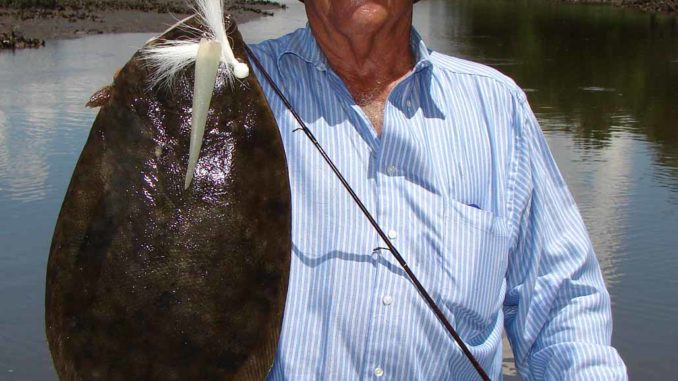
Structure, moving water and baitfish provide flounder with everything they need
It isn’t a secret that North Carolina’s lower Cape Fear River is a good place to catch flounder. The area produces great numbers of flounder and plenty of big fish; the 20-pound, 8-ounce state-record was caught there in 1980.
The river is tidal upstream to Wilmington and above, and it moves a lot of baitfish between the river’s mouth at Southport and Wilmington. The river has a small split at Snow’s Cut, where a little of the tidal flow moves through that man-made canal and Carolina Beach Inlet, but the great majority of the flow and baitfish move through the river’s mouth between Bald Head Island and Fort Caswell.
Heading upriver from the ocean, fishing begins in the sloughs between the shoals in Cape Fear and Carolina Beach inlets. From Carolina Beach Inlet, the flow immediately moves through Snow’s Cut into the river. There is structure and deep holes, plus bridge bulkheads and pilings, and all hold flounder.
Across from Southport are several small bays, and the flow is partially diffused into marsh and creek systems behind Oak Island and Bald Head Island. Heading upriver from Southport the ship channel is lined with spoil islands created during past dredging projects, and several protected bays. Upriver of Snows Cut, the spoil Islands continue and are joined by creeks on both sides of the river. All hold flounder.
This is a place where several favorite techniques have good chances of being successful. Some fishermen like large, live baits like menhaden and corncob mullet, while others prefer finger mullet and mud minnows. Some prefer to fish deeper water and jig a bucktail with a plastic or cut-bait trailer, and still others like to bump a soft-plastic lure along the bottom. The good news is that all of these techniques produce.
“Any of the structure along the river might be holding flounder at any time,” said Jimmy Price, a Southport guide with an excellent reputation for catching flounder. “There is food and places to hide, and they like it. When the water begins to cool in September and the bait is rushing around, flounder get aggressive, and it’s a good time to catch them.
“Both live baits and artificials catch flounder,” Price said. “The difference I like best is that flounder have to turn a live bait and swallow it head first so the fins don’t snag in their throat and you have to give them some time. Artificials fold in their mouths and go right in. With a bucktail or a grub, you can jack their jaws as soon as you feel the flounder.”
Limits aren’t guaranteed, but the lower Cape Fear River is a good place to catch numbers of flounder and big specimens. There are shallow ledges, spoil island grass lines, deeper channels, rocks and a wide variety of other structure that all hold flounder. Many flounder fishermen feel the next state record will come from the river or its associated waters.





Be the first to comment